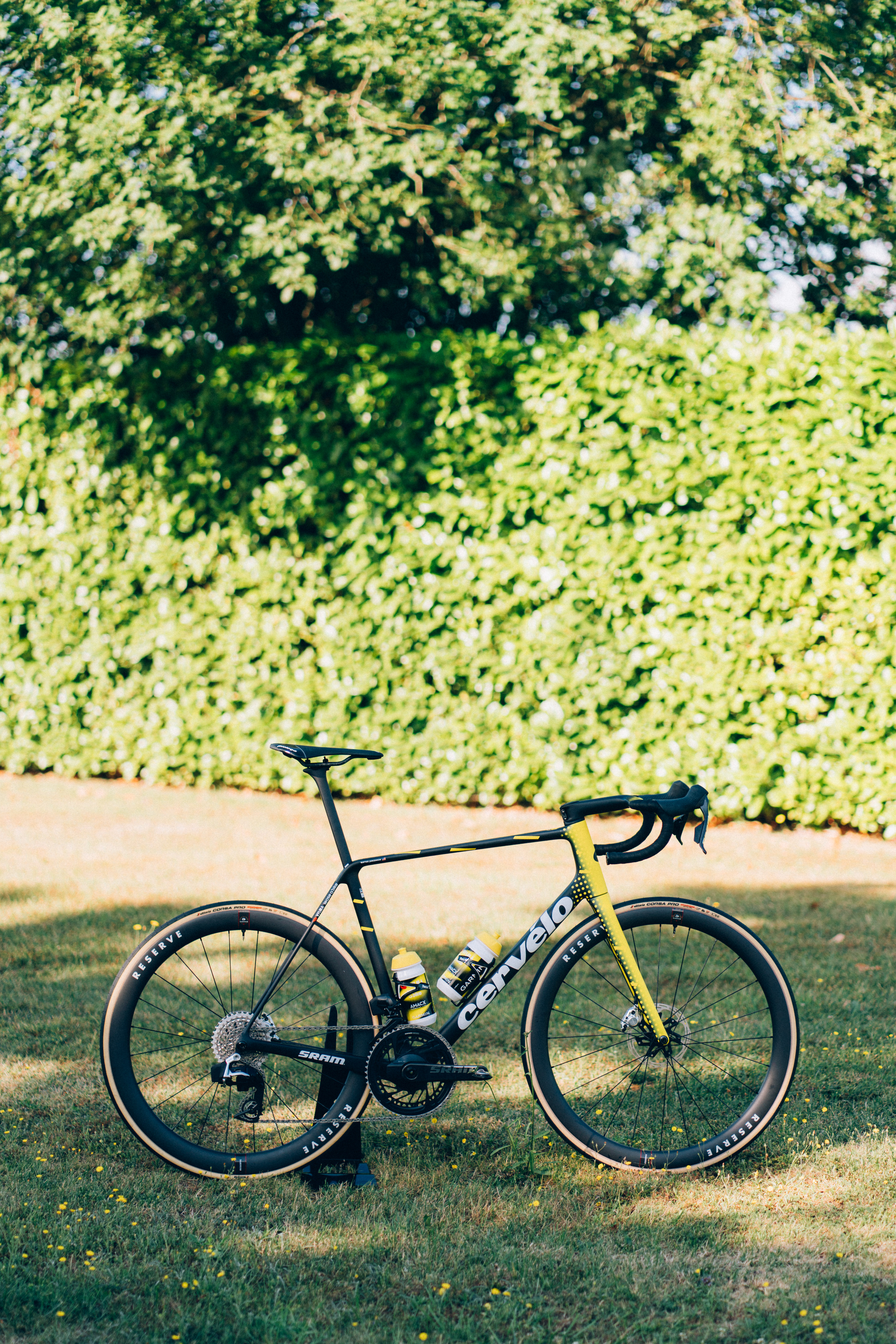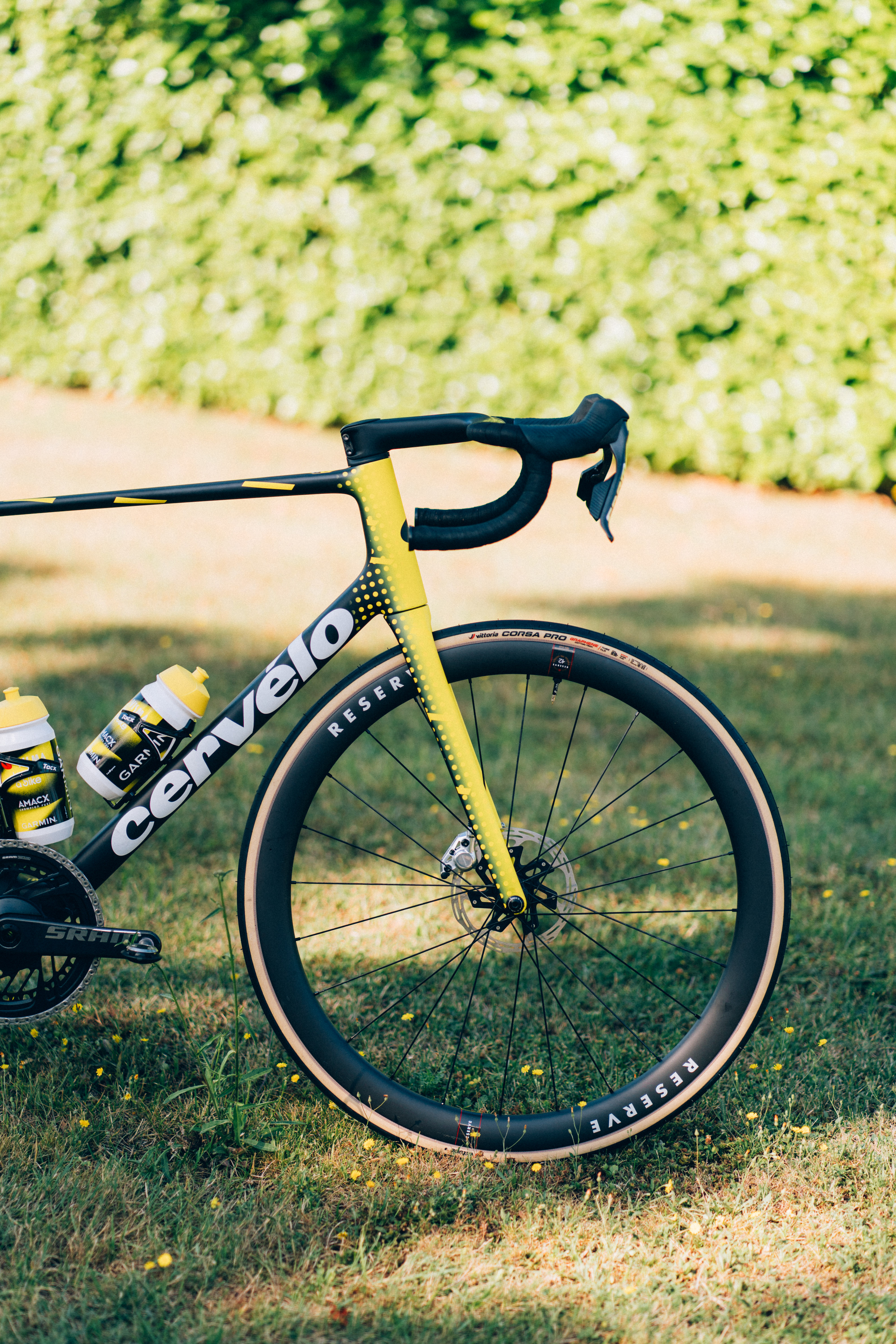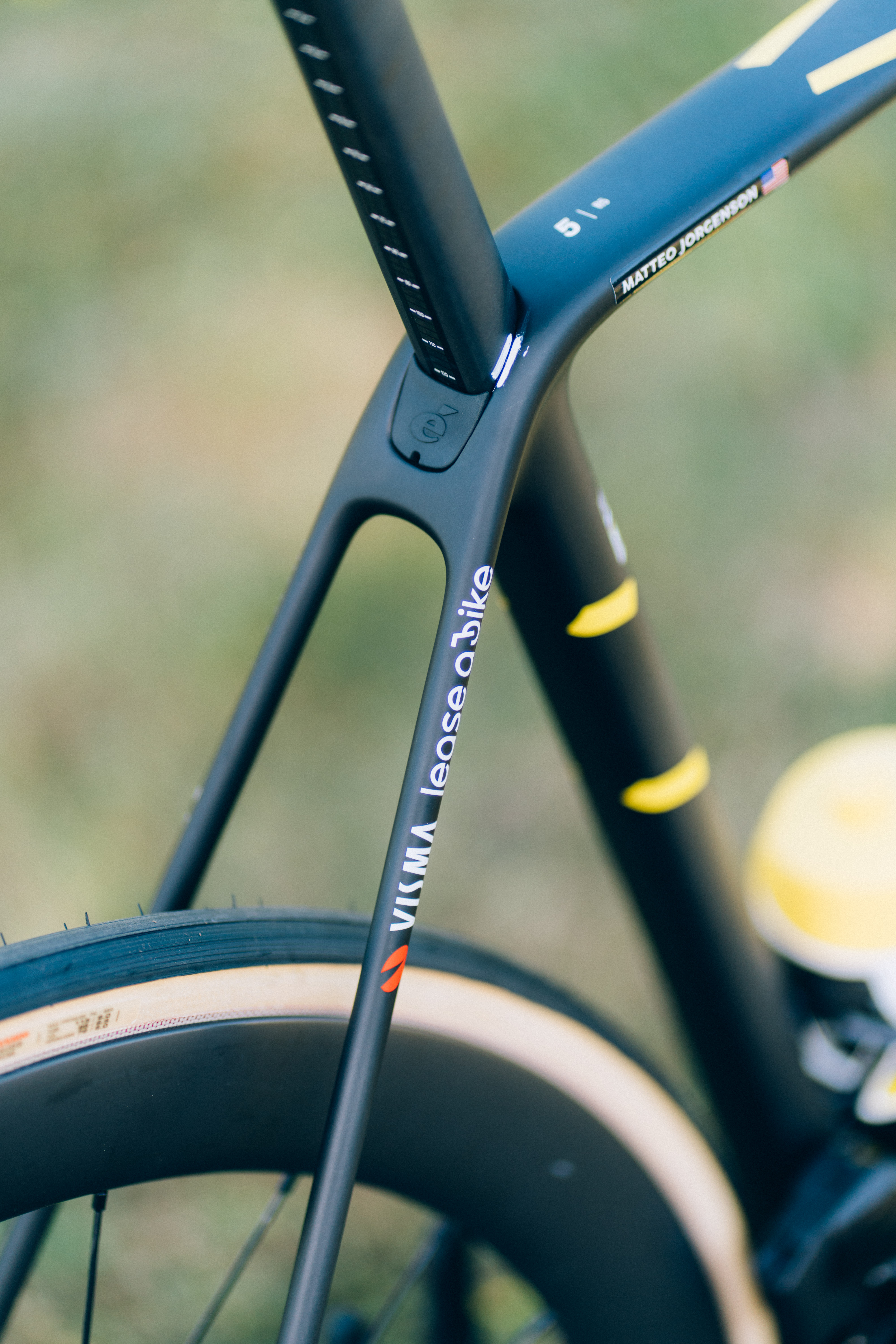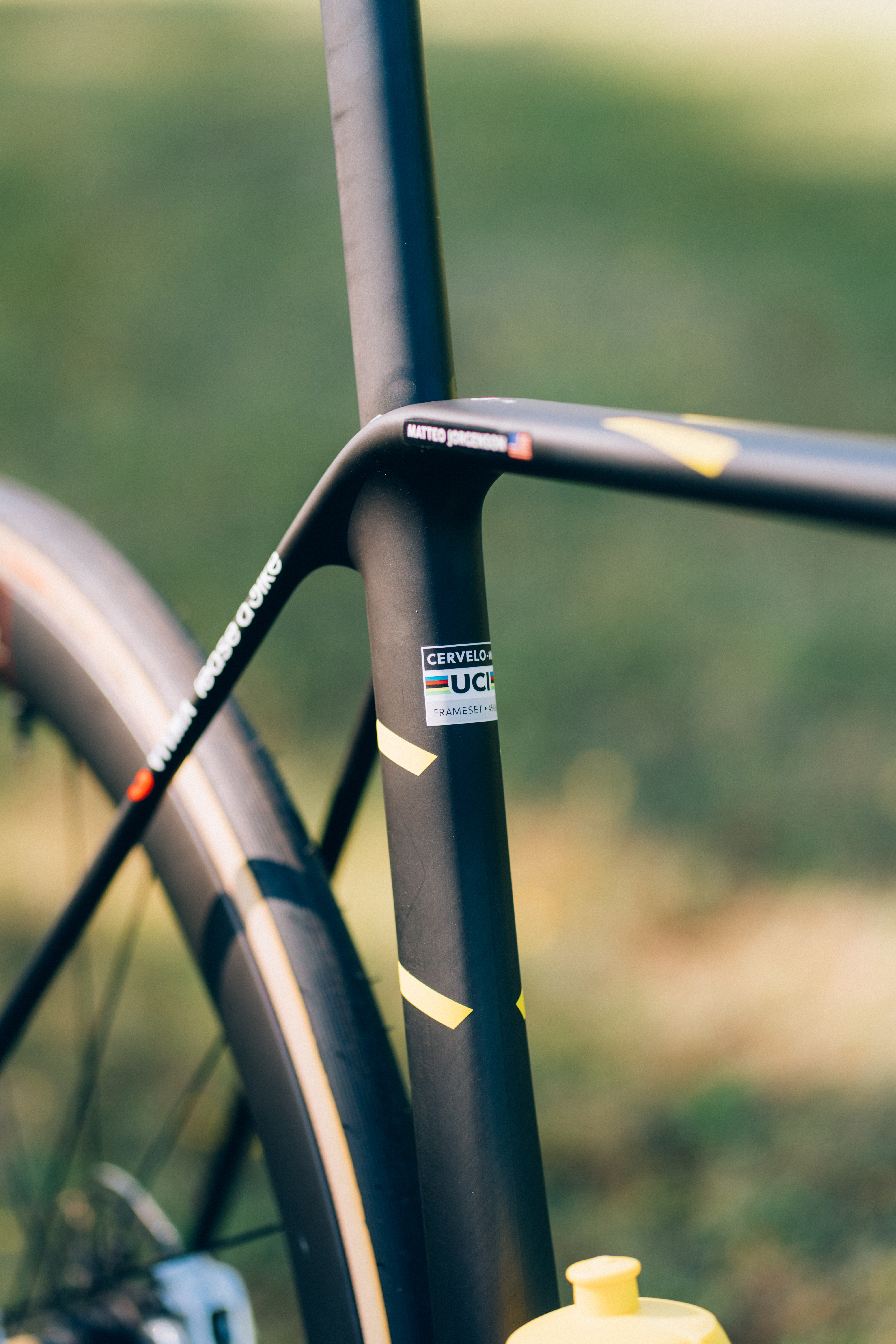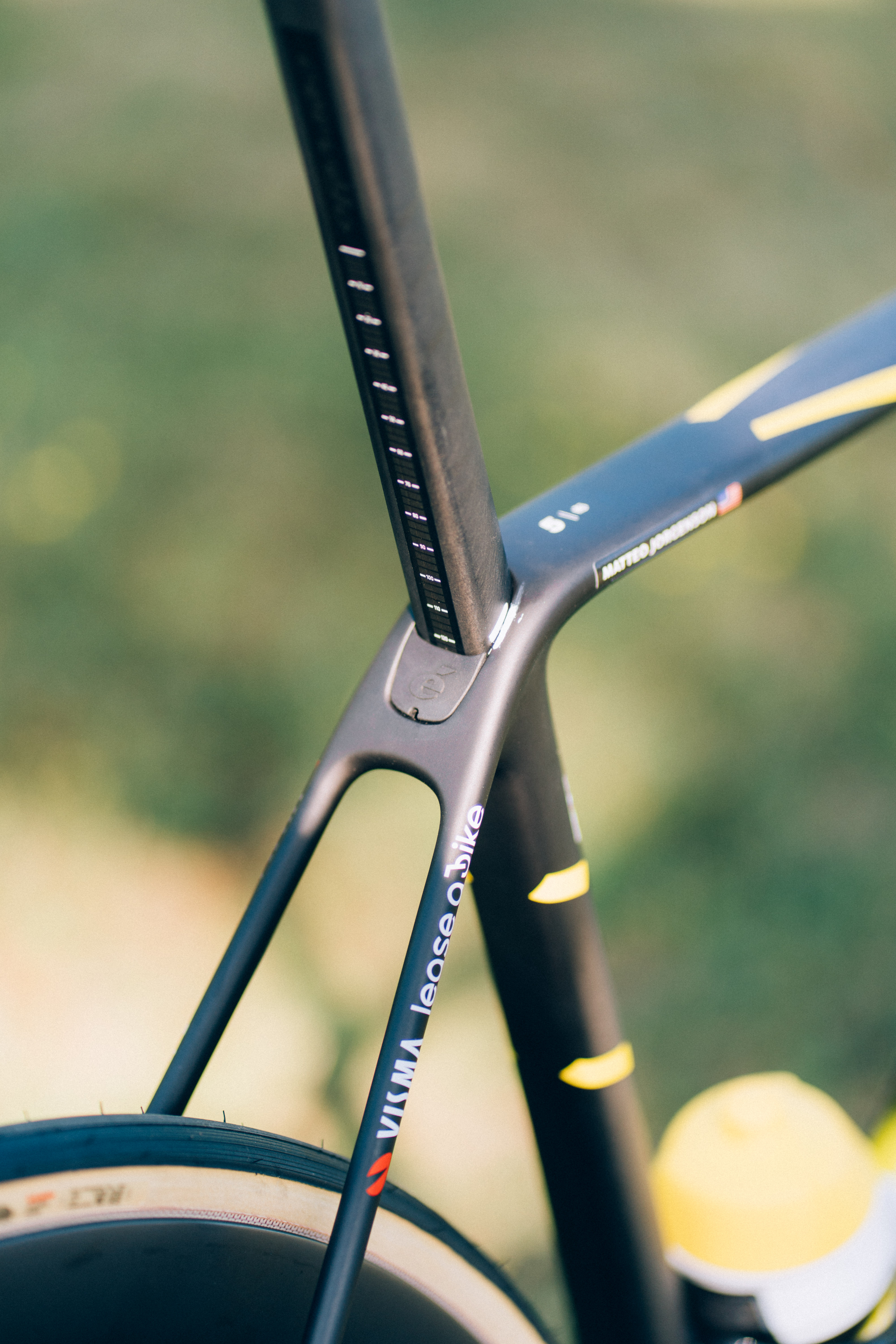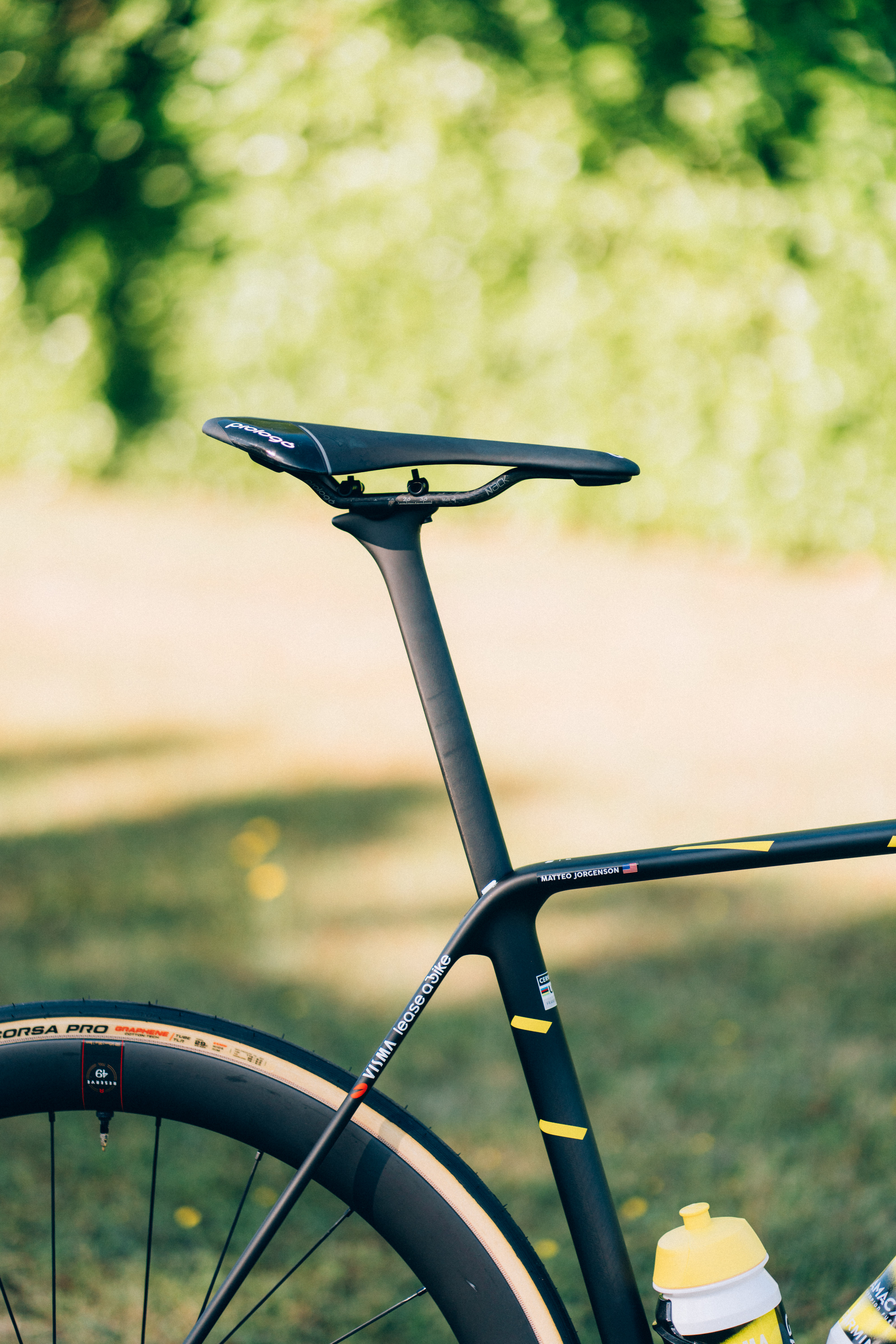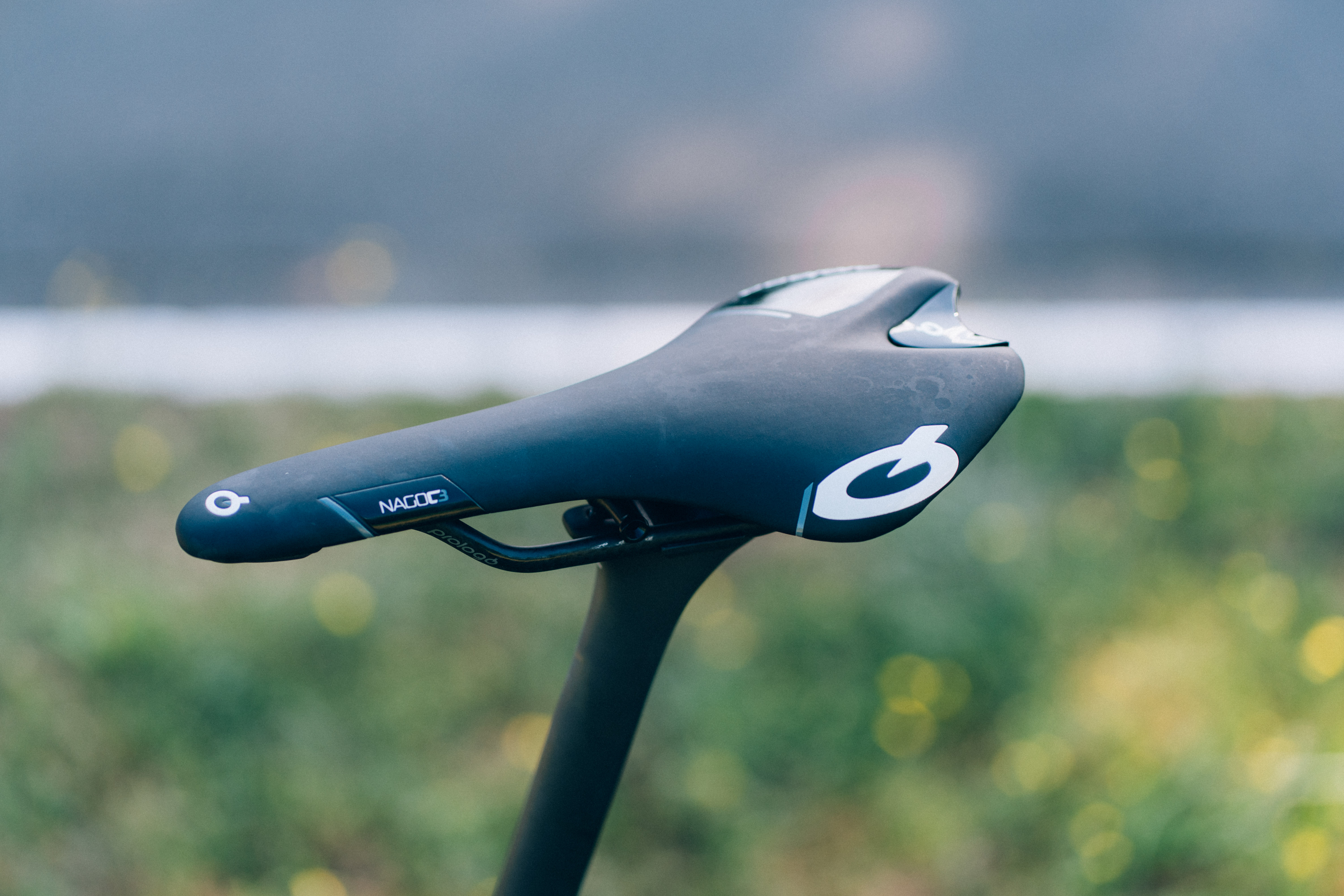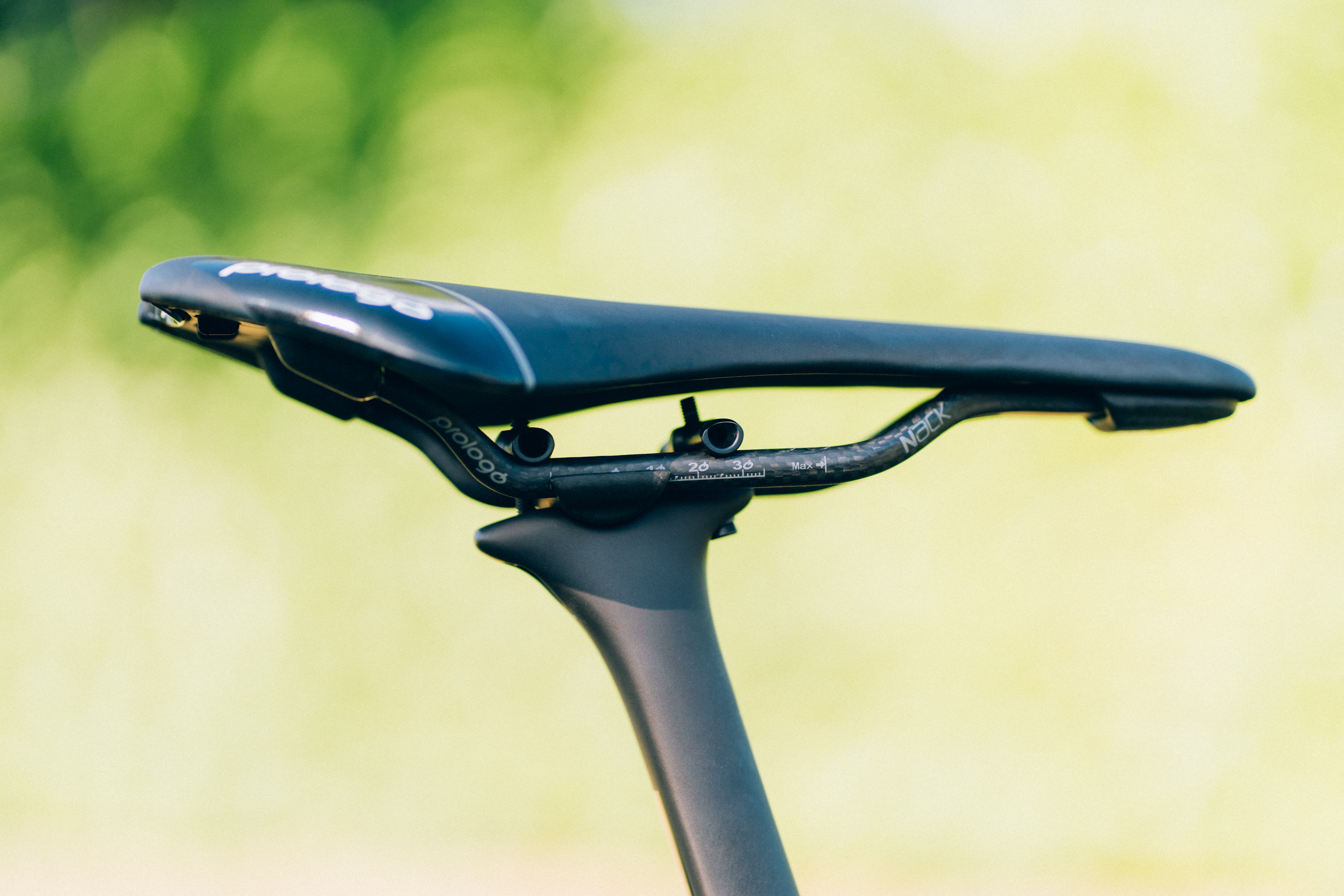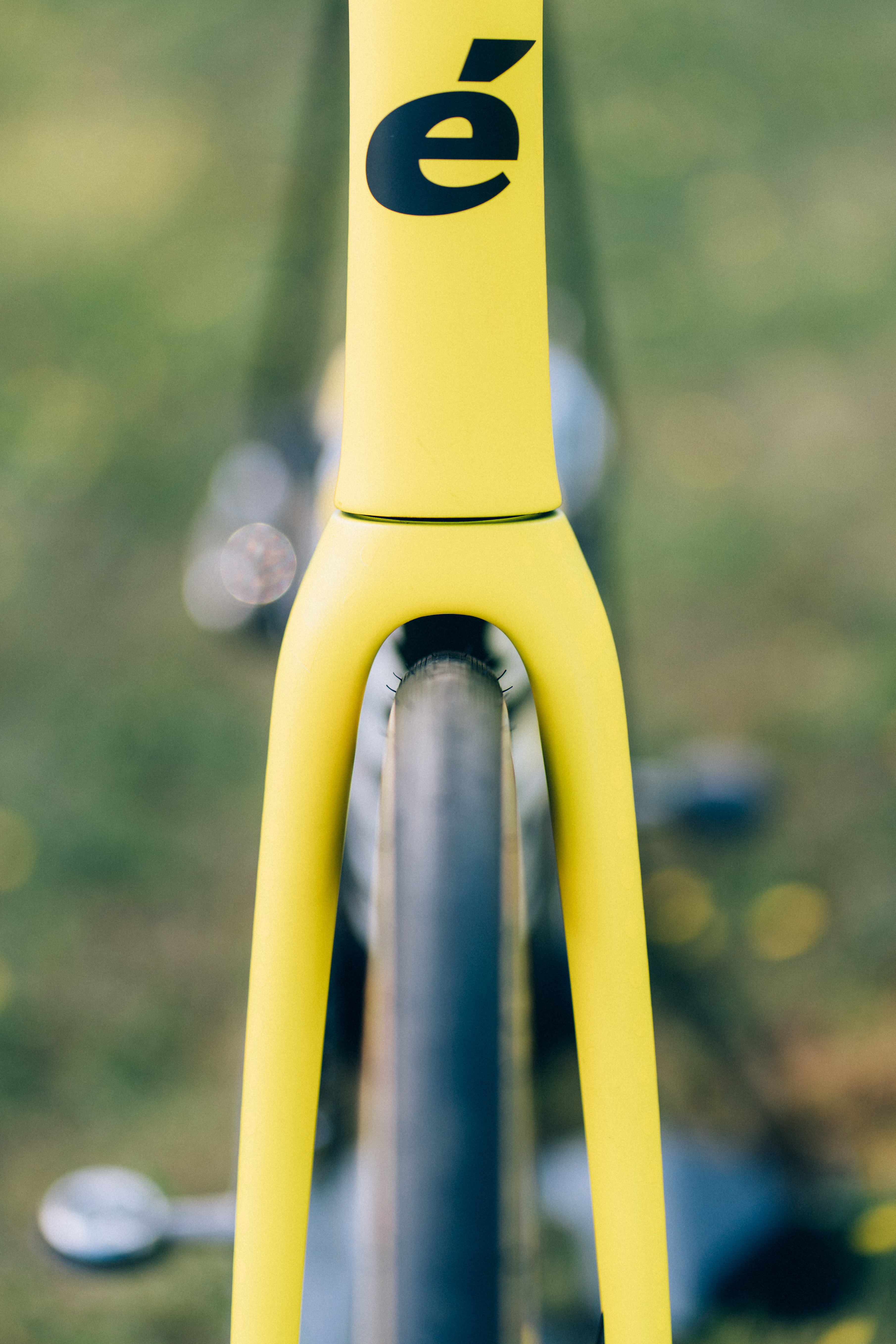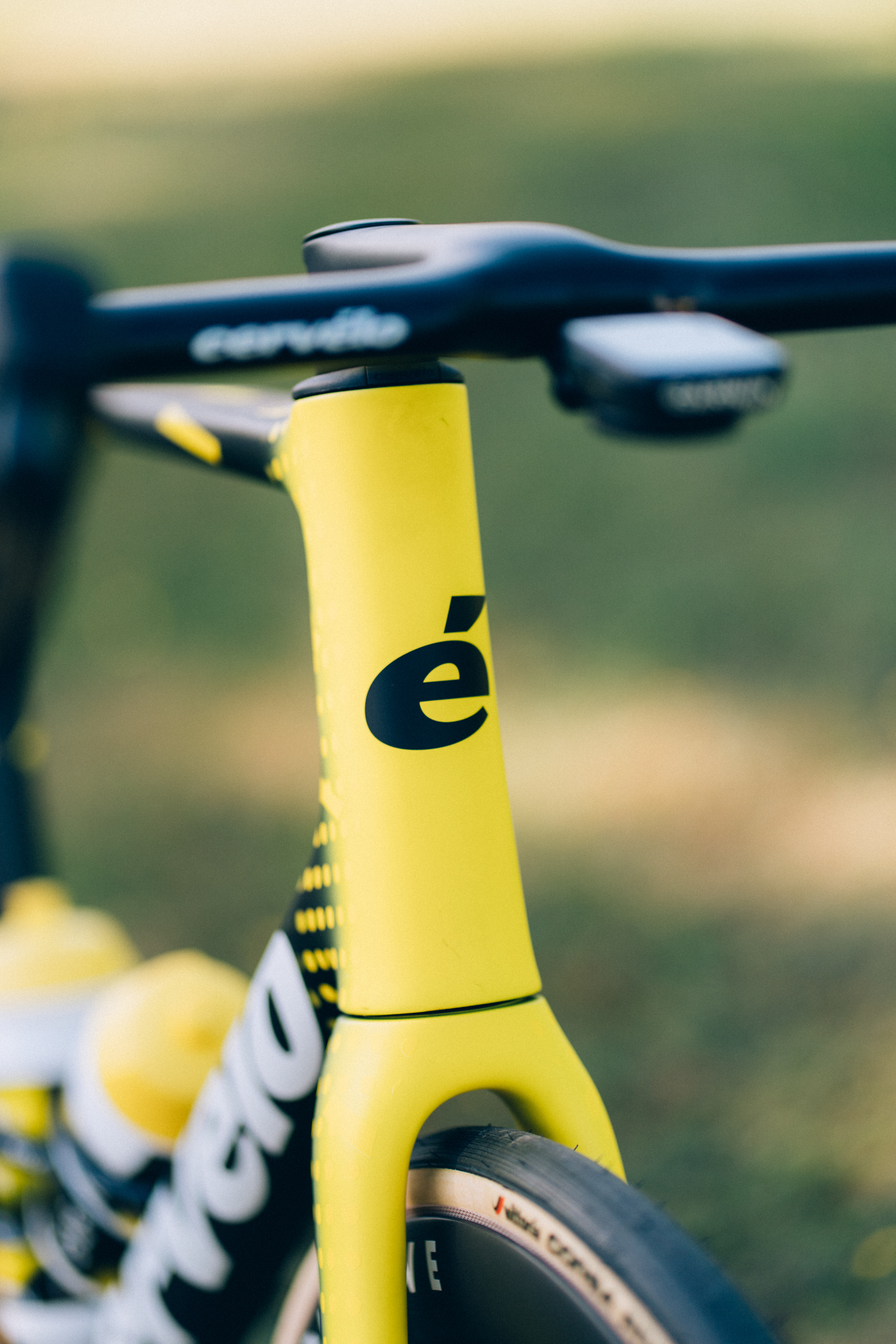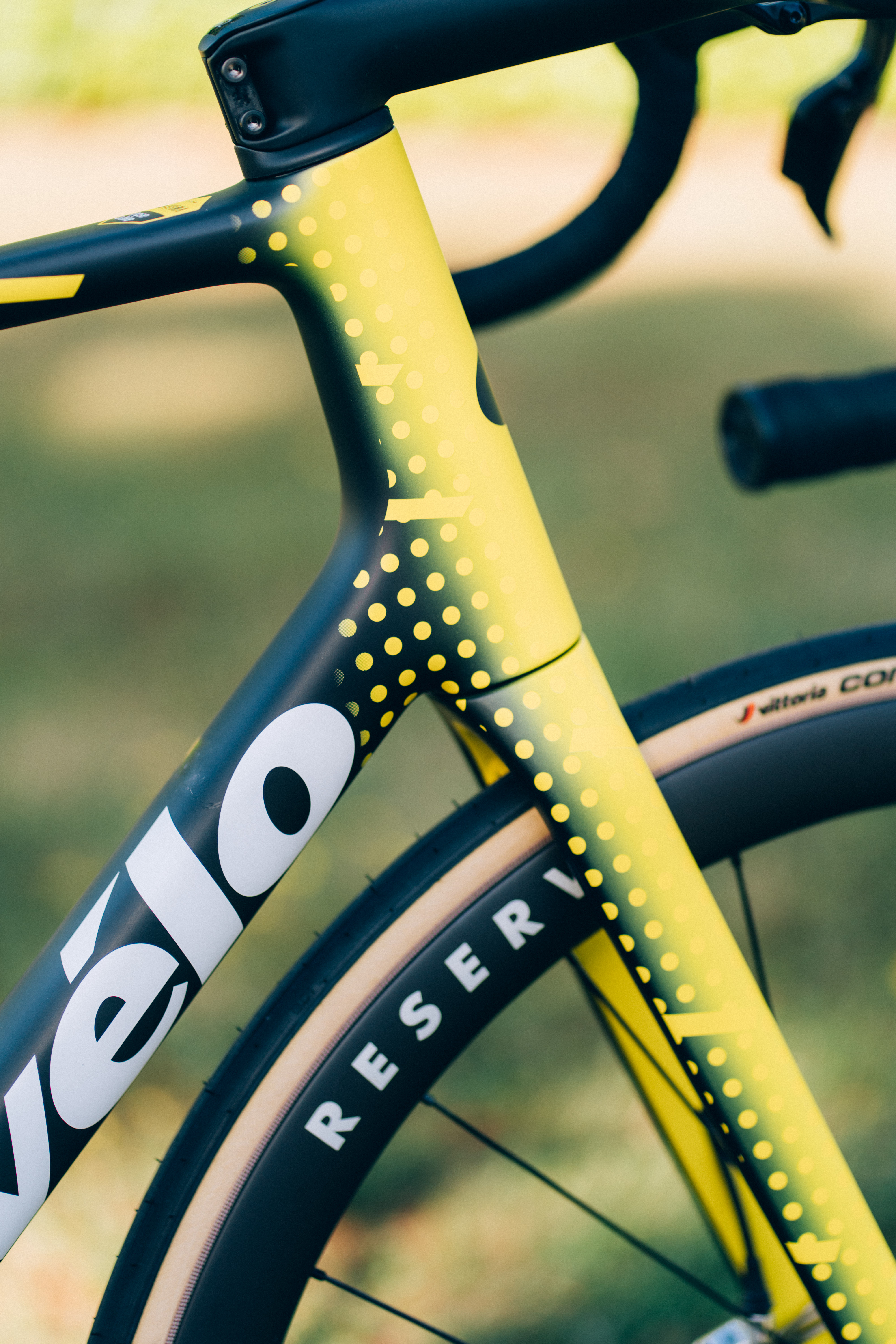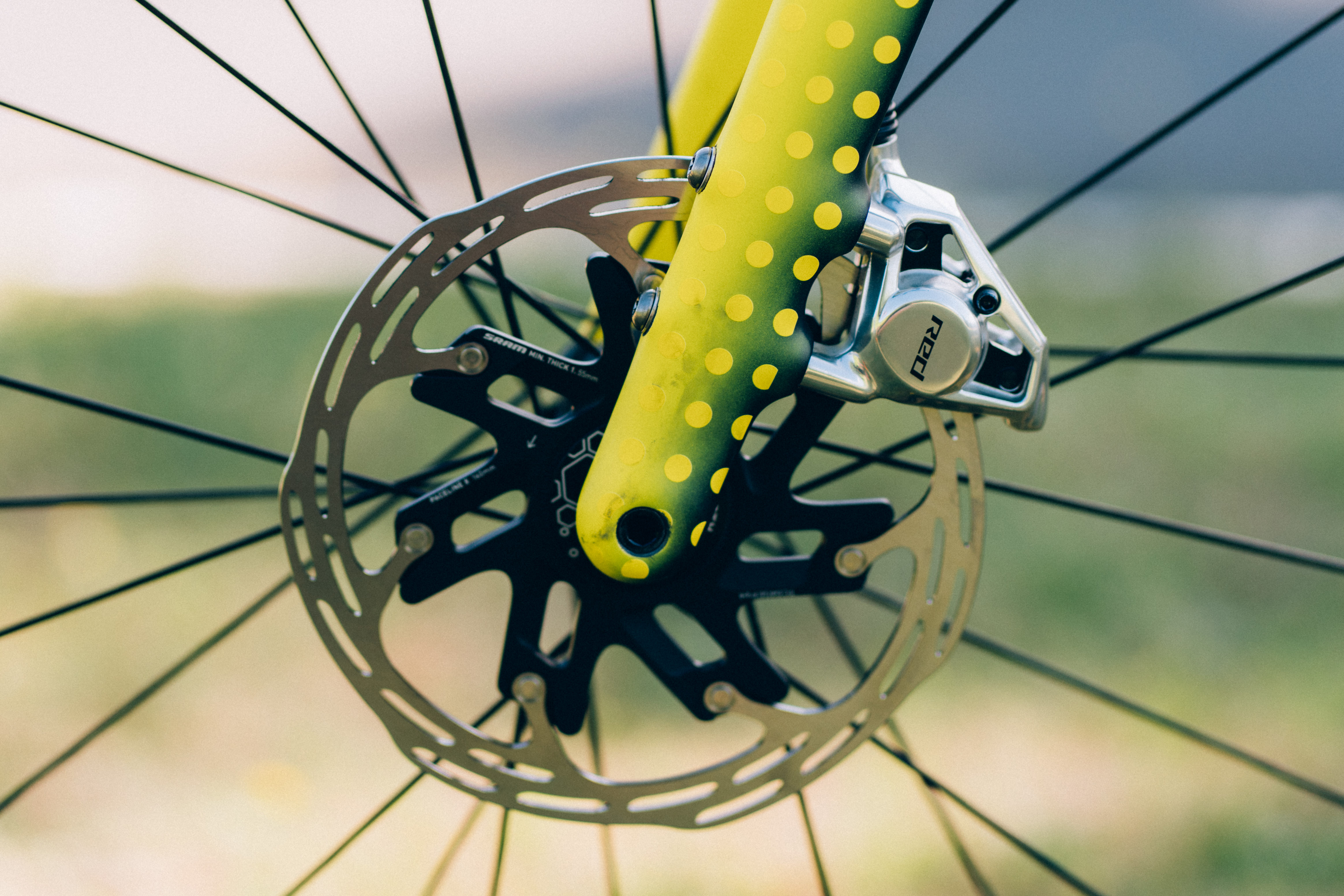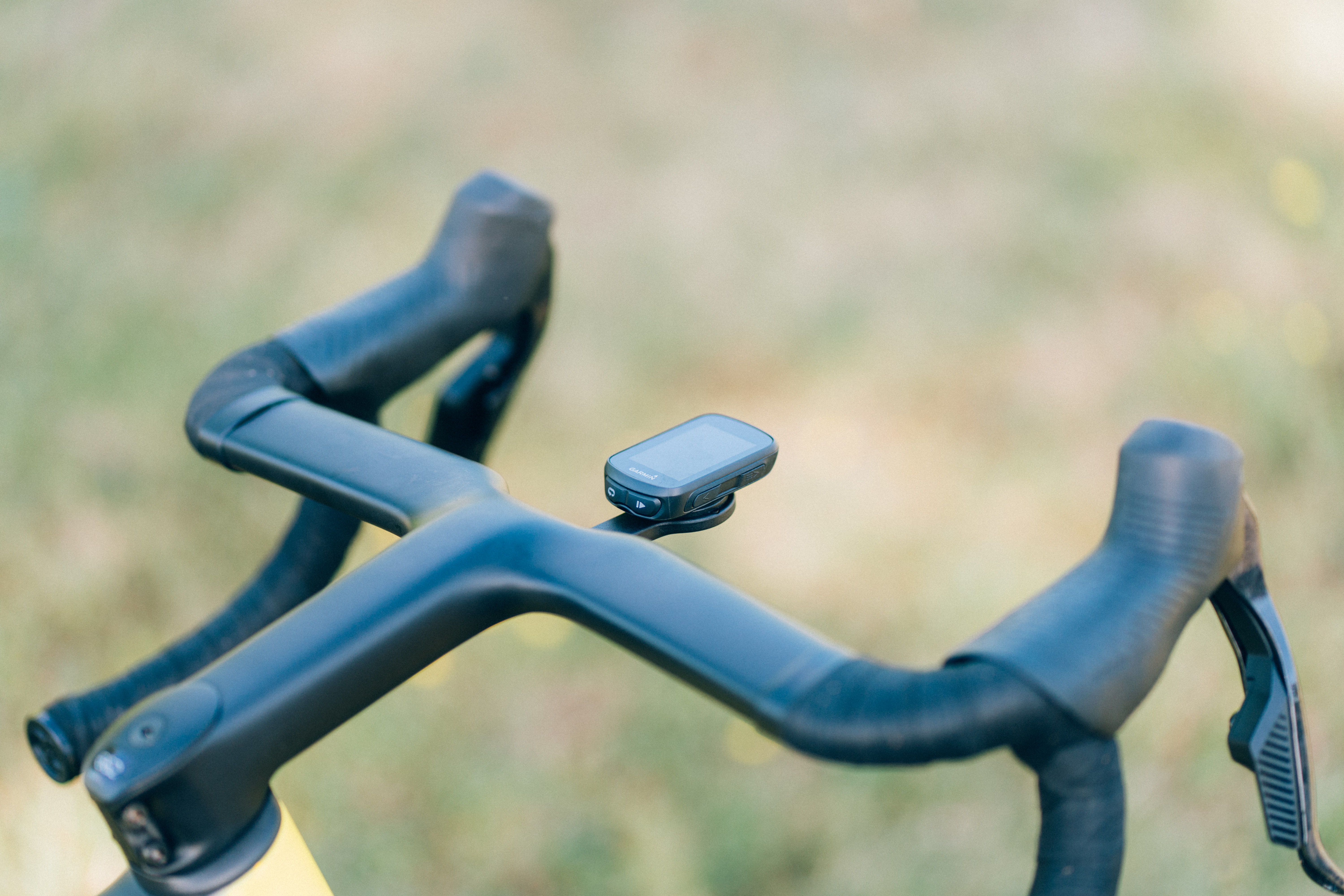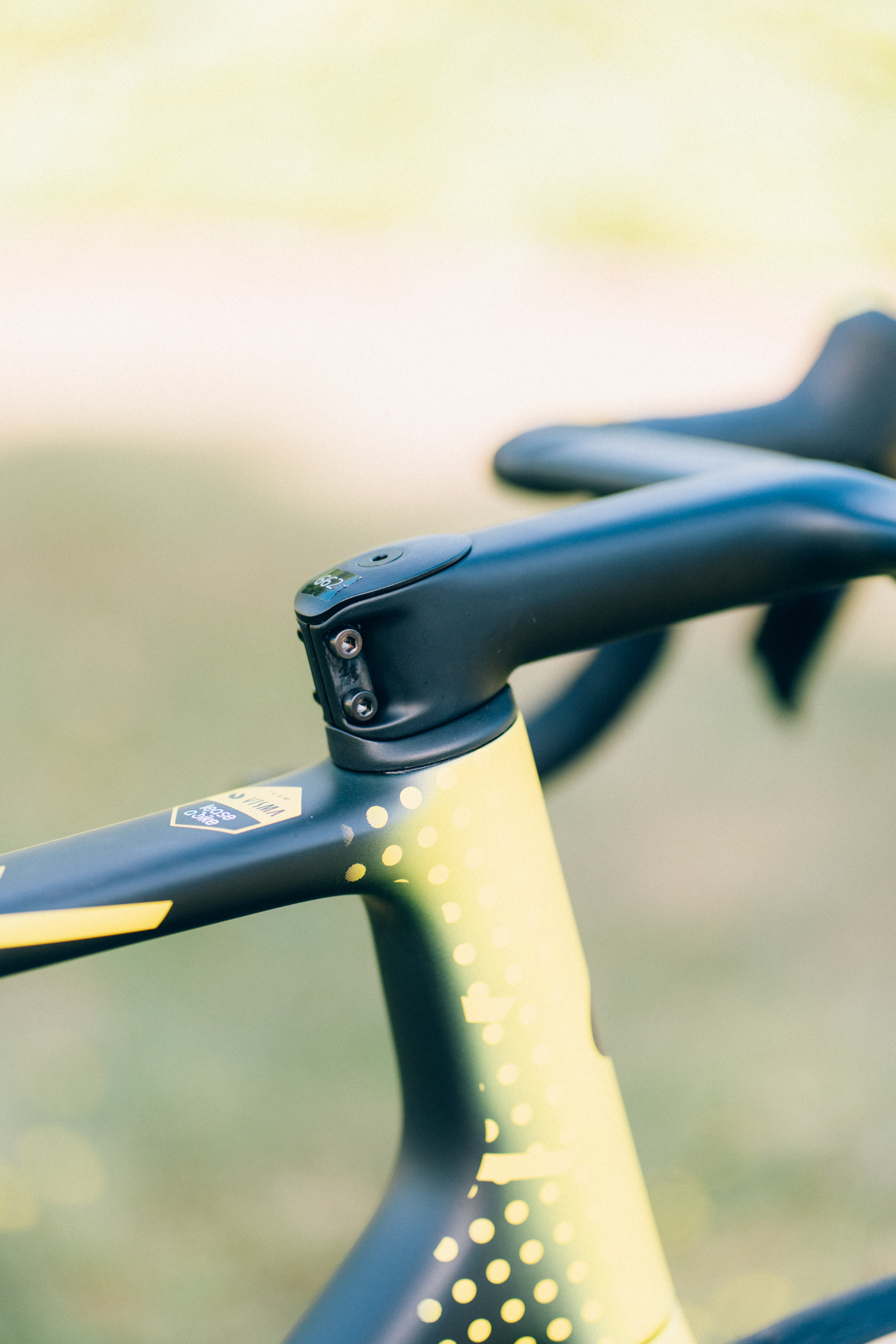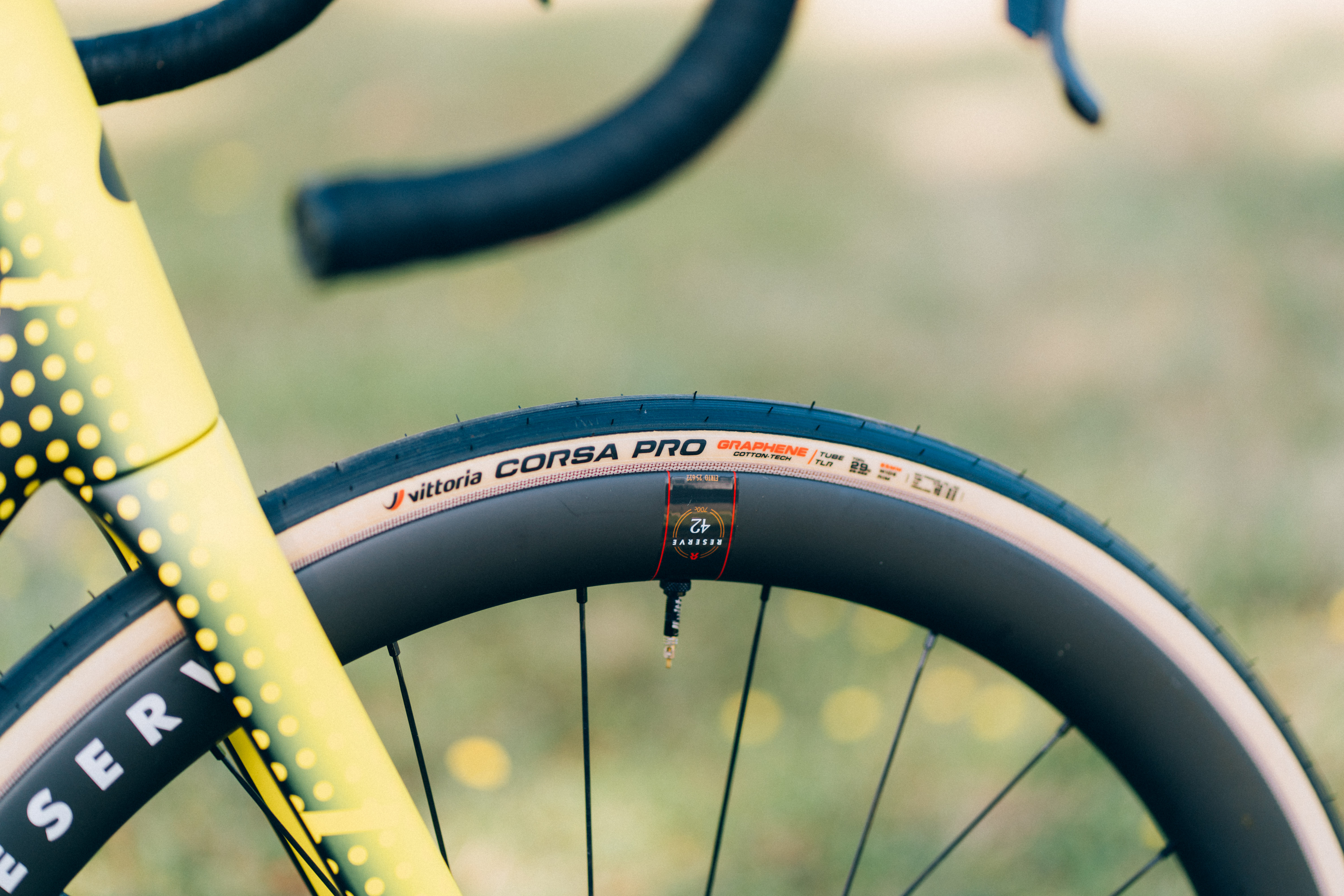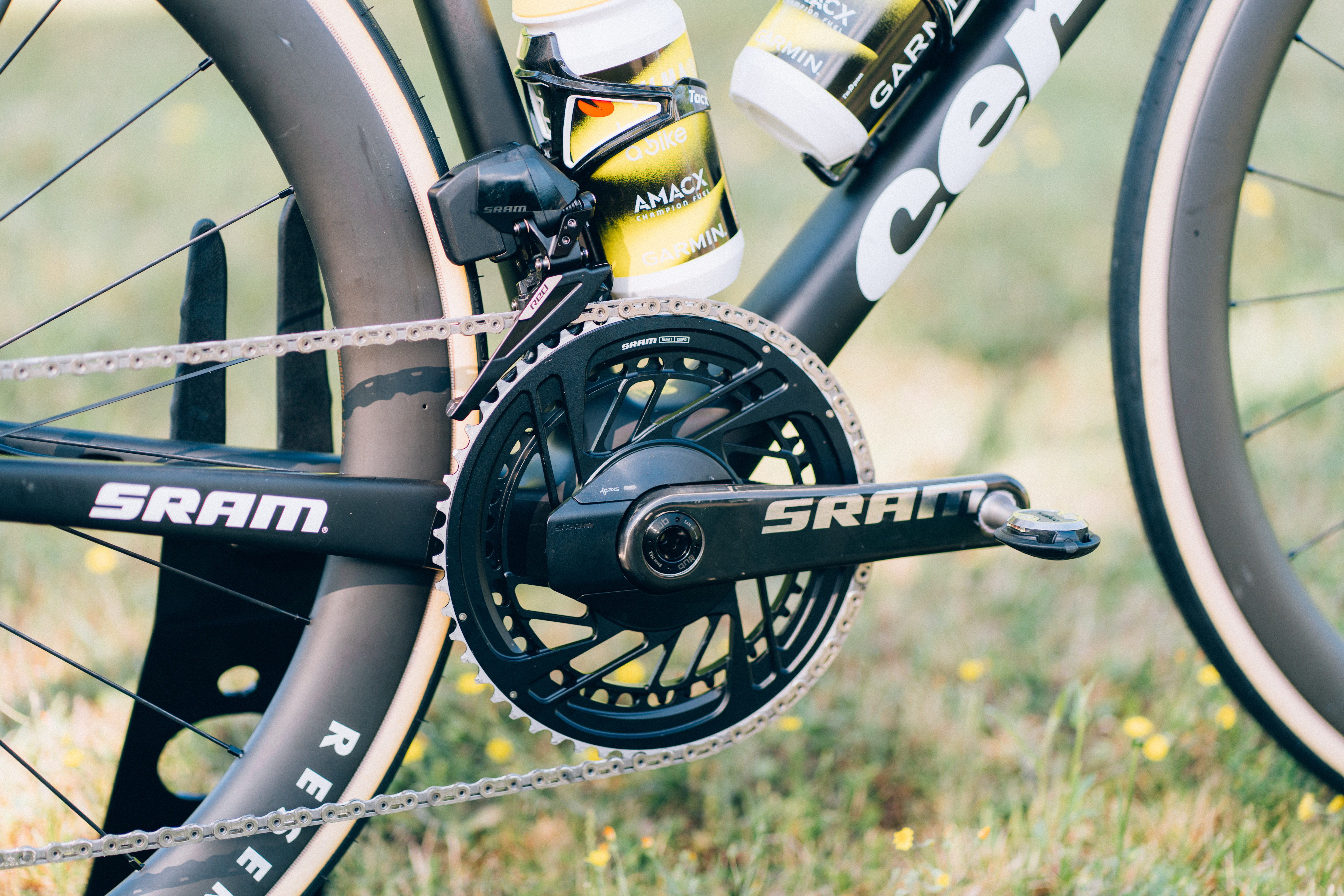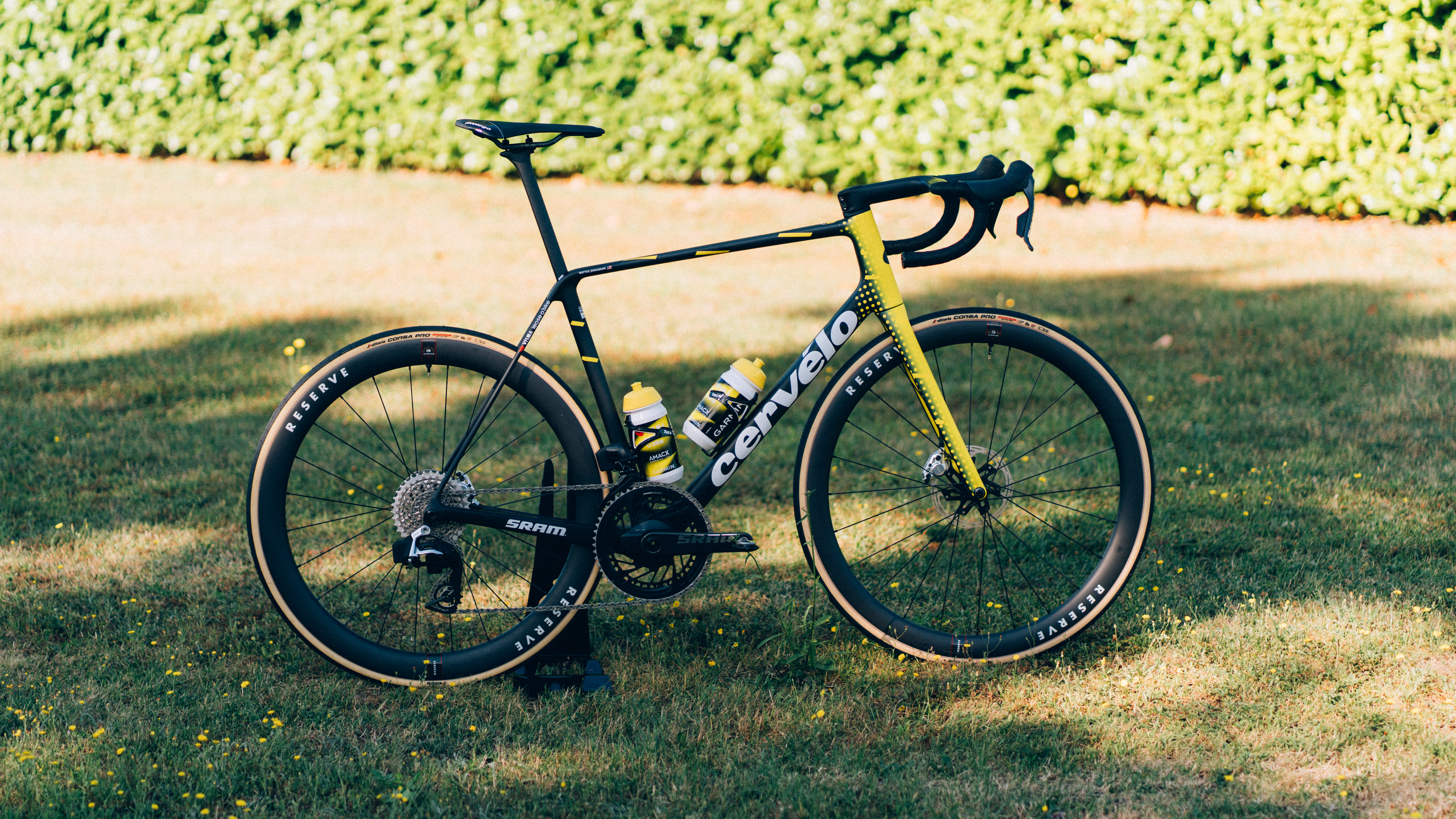
There's inevitably a joke about buses here: You wait ages for one and then two (well, three) show up at the same time. Just weeks after Cervélo unveiled a new aero gravel bike, I headed to the Visma-Lease A Bike hotel this morning ostensibly to grab some photos of Jonas Vingegaard's yet-to-be-released Cervélo S5 aero bike ahead of the Tour de France. By a happy coincidence, I met some of the team from Cervélo, and they happily wheeled out a brand new, unreleased R5 climbing bike for me to take a look at too.
On the face of it, it's a similar-looking machine, but having had a pretty in-depth chat with the engineer, there's a lot going on in the name of less weight. It is light - bang on the UCI 6.8kg weight limit even with everything attached to it - and will be used by Visma on the steeper mountains where, I am told, acceleration is an important factor.
Scotty (Scott Roy), the engineer, told me he basically had free rein to make any changes he liked to the old R5 in the name of performance, embodying the old 'no stone unturned' philosophy that has made the Cervélo x Visma partnership so successful in the recent past.
At the front, the transition from fork crown to frame has been sculpted away to remove bulk, and at the bottom of the fork legs, the brake mount has been swapped away from a flat mount to a direct mount system through the whole fork leg, doing away with the alloy slug inside to shave a few grams.
The top tube has been raised a little to create a stiffer feeling rear end to bring it more in tune with the S5 aero bike; in fact, the fit has been changed to exactly mirror the S5 so that riders can swap seamlessly between the two.
The seatpost is the same shape, but lighter, and has a new clamp that also reduces weight. Even the cradle for the saddle, previously alloy, is now carbon. I'm told that weight higher up on the bike makes it more of a pendulum when sprinting, or climbing out of the saddle, and so reducing weight higher up on the bike has an impact on performance over and above just reducing system weight.
Heading down from the seat clamp, the seat stays have been made to just (and I mean by a hair) comply with the minimum legal diameter of 10mm. They are manufactured to just under 10mm in diameter, and the scant paint on top takes it right up to the limit and no more.
At the front, there is a fresh cockpit, available in 19 size configurations at a cost-to-Cervélo of between $10-15k per mould. The clamp has been de-bulked, and despite having a D-shaped steerer, the system is compatible with any cockpit that can clamp on a round steerer thanks to an insert for the hoses.
Perhaps my favourite part, though admittedly not bike related, is the fact that on hilly days the team all apparently opt to use the minute Garmin Edge 130 Plus, rather than a bigger computer.
The team tells me that they will use the S5 for the majority of the race, but we've seen them playing around with different setups. Aero bike with lightweight climbing wheels, but with a platform as light as this new R5, which can hit the UCI weight limit with everything (pedals, cages, computer mount, etc) attached to it, it opens the door to using the R5 with deeper wheels for little weight penalty.
I'll bring you what was quite a wide-ranging interview on bike development, the new UCI rules, and how Visma set their bikes up in the fullness of time, but for now, here's a load of photos of a cool new bike. Weight weenieism is back, and I'm so here for it.
